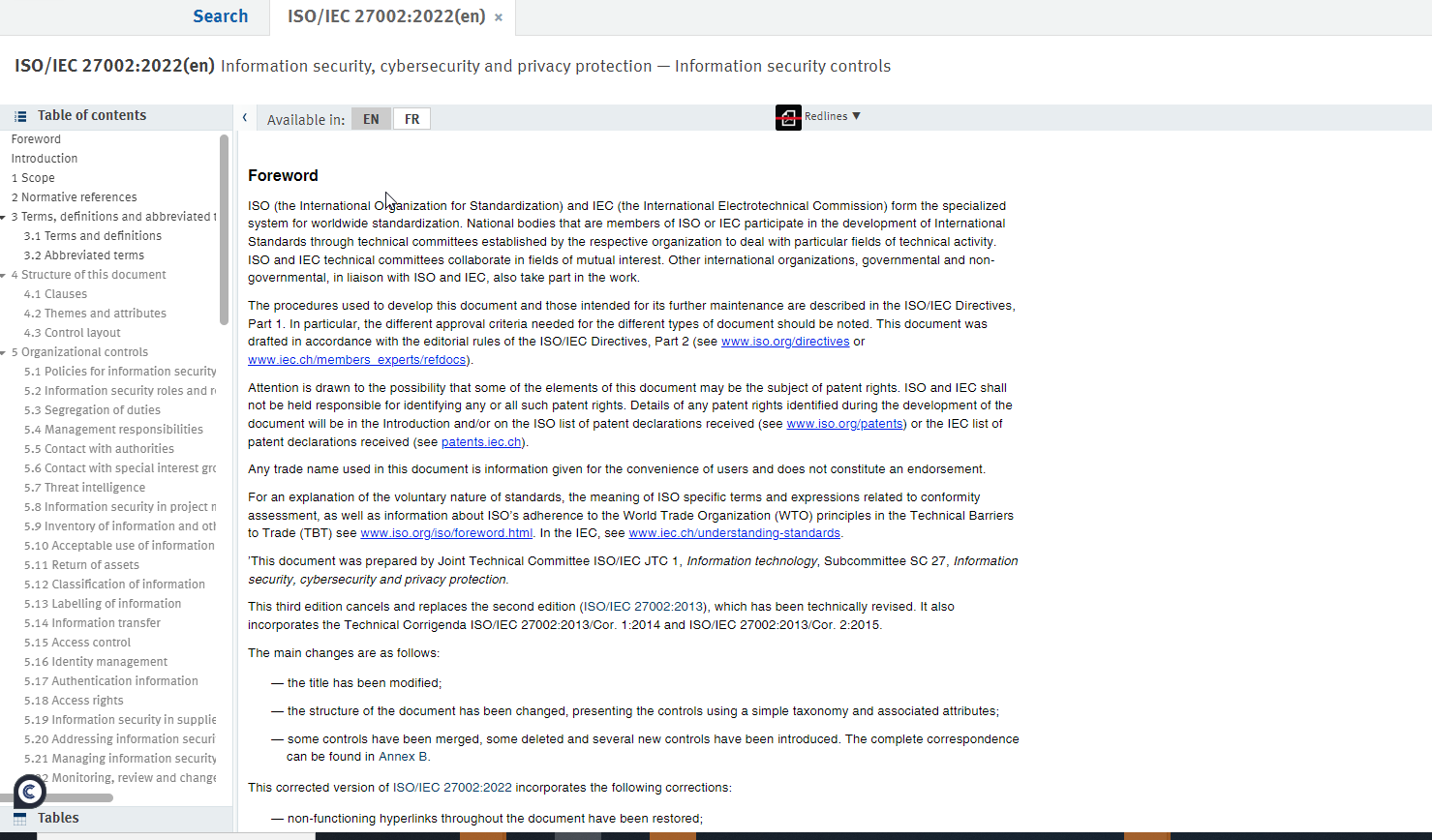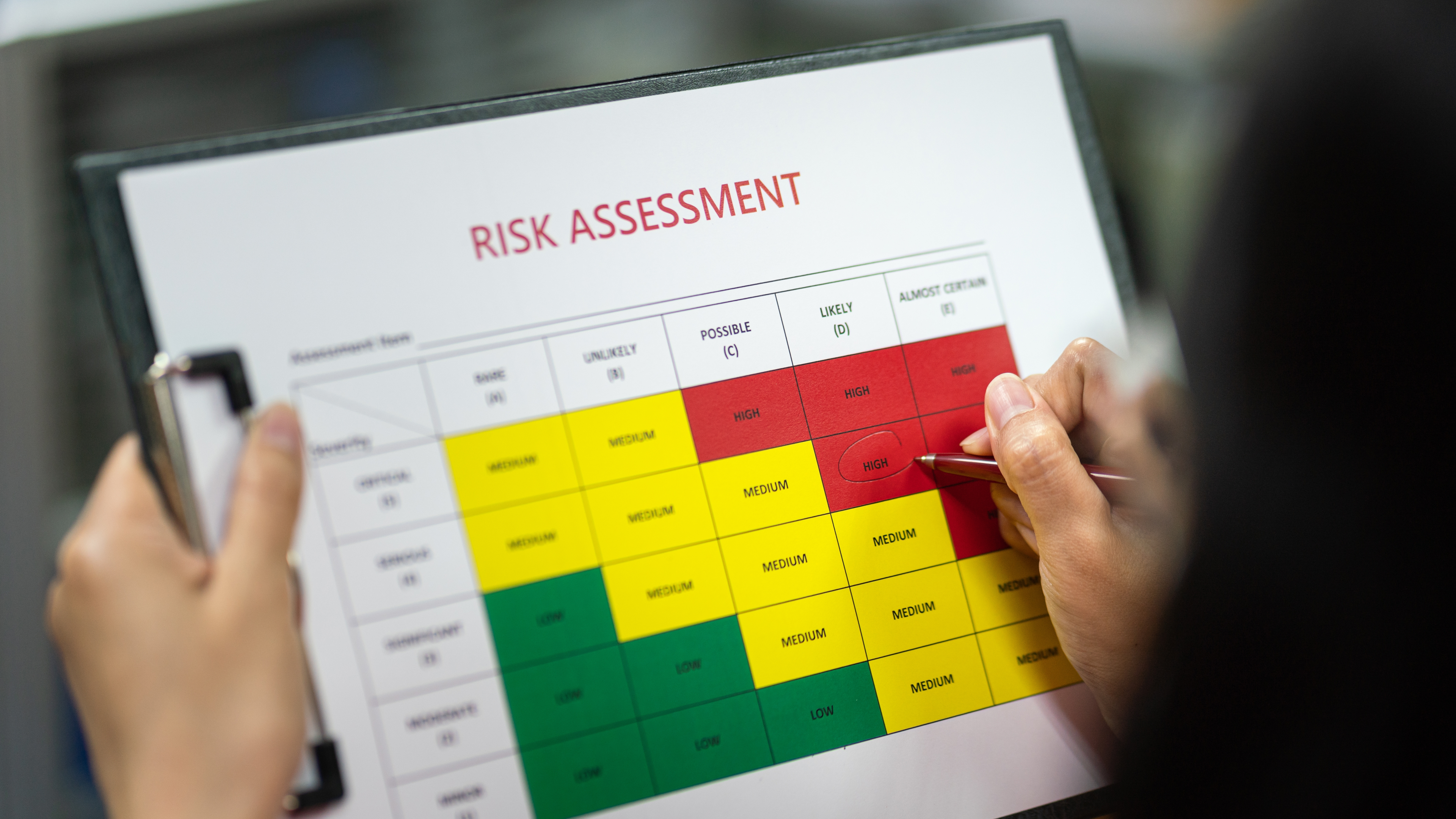How Much Does ISO 27002 Certification Cost in 2023?
Imagine having a complete set of best practices, guidelines, and control objectives at your fingertips, all designed to help your organization implement and maintain an effective information security management system. That is precisely what ISO 27002 offers. In this blog post, we will explore the ins and outs of ISO 27002, including its relationship with ISO 27001, the key components and benefits of the standard, and the associated costs of implementation.
Key Takeaways
- ISO 27002 is a code of practice for information security controls that provides organizations with guidance to improve their security posture and comply with industry standards.
- The implementation process consists of conducting gap analysis, developing policies & procedures, and providing employee training & awareness.
- Benefits include improved information security, compliance with industry standards, enhanced risk management and cost efficiencies. Costs associated can be significant.
Understanding ISO 27002: An Overview

As a code of practice for information security controls, ISO 27002 provides organizations with invaluable guidance for establishing and maintaining an effective information security management system (ISMS). This standard serves as a complementary resource to ISO 27001, the international standard for information security management systems. ISO 27002 improves organizations’ overall security posture and ensures compliance with industry standards by addressing a wide range of security risks and vulnerabilities.
But what exactly is ISO 27002, and how does it relate to ISO 27001?
What is ISO 27002?

ISO 27002 is a set of recommended security controls designed to protect an organization’s information assets. It serves as a valuable resource for organizations seeking ISO 27001 certification, as it provides guidelines for implementing the controls listed in ISO 27001 Annex A, which can be part of a risk treatment plan. The standard is composed of 11 clauses and Annex A, which provides guidance on control objectives and controls, helping organizations achieve regulatory compliance.
Organizations that implement ISO 27002 gain:
- Improved information security
- Enhanced risk management
- Compliance with industry standards
- Effective vulnerability assessments
This helps ensure that they are prepared for any potential threats that may arise.
Learn more here: https://en.wikipedia.org/wiki/ISO/IEC_27002
Relationship between ISO 27001 and ISO 27002
ISO 27001 is the central certification standard for ISMS, with ISO 27002 supplementing it by offering guidelines on how to implement the necessary controls for ISO 27001 compliance. The process for implementing ISO 27002 typically involves:
- Conducting a gap analysis
- Establishing policies and procedures
- Providing employee training and awareness
- Performing an information security risk assessment
The costs associated with acquiring both ISO 27001 and ISO 27002 standards can be significant, including:
- Consultation fees
- Employee training costs
- Software and tool costs
- Potentially investing in compliance automation solutions
However, the benefits of implementing both standards, such as enhanced information security and compliance with industry best practices, often outweigh the associated costs.
Key Components of ISO 27002

ISO 27002 is a comprehensive framework that covers various aspects of information security, from access control to incident management. The standard is structured into 14 control categories, each addressing a specific aspect of information security.
The structure and control categories of ISO 27002 warrant further examination, particularly during surveillance audits, as a single surveillance audit may not cover all aspects.
Structure of ISO 27002
ISO 27002 consists of four chapters, providing a reference set of generic information security controls and implementation guidance. The standard was revised in 2022, resulting in a decrease of security controls from 114 to 93, now categorized into four control “themes”. These control categories include:
- Information Security Policies
- Organizational Security
- Asset Management
- Access Control
- Cryptography
- Physical and Environmental Security
- Operations Security
- Communications Security
- System Acquisition, Development, and Maintenance
- Supplier Relationships
- Information Security Incident Management
- Business Continuity Management
- Compliance
Organizations can achieve the following benefits by implementing the controls and best practices outlined in ISO 27002:
- Improved information security
- Compliance with industry standards
- Enhanced risk management
- Cost efficiencies
The standard serves as a valuable resource for organizations seeking to strengthen their security posture and protect their valuable information assets.
Control Categories in ISO 27002
ISO 27002 comprises four domains of control categories: Leadership and Management, Asset Management, Access Control, and Operations Security. The Leadership and Management domain encompasses control categories such as Risk Assessment, Risk Treatment, Security Policy, Organization of Information Security, Human Resources Security, Asset Management, Access Control, and Operations Security.
The Asset Management domain includes control categories such as Identification and Authentication, System and Communications Protection, System and Information Integrity, and Physical and Environmental Security. The Access Control domain features control categories like Access Control, Cryptography, and Network Security. Lastly, the Operations Security domain encompasses Incident Management, Business Continuity Management, Compliance, and Information Security Aspects of Business Continuity Management.
Benefits of Implementing ISO 27002

The implementation of ISO 27002 offers a range of benefits, such as:
- Increased awareness of information security practices and procedures
- Improved visibility for information security management
- Strengthened security posture
- Control mechanisms for implementing, maintaining, and enhancing information security management
A more in-depth look at the specific benefits of implementing ISO 27002 is warranted.
Enhanced Information Security
Implementing ISO 27002 helps organizations strengthen their information security posture and protect sensitive data. ISO 27002 can:
- Reduce an organization’s susceptibility to cyber attacks
- Help it adapt to changing security risks by addressing a wide range of security risks and vulnerabilities
- Make it easier to comply with other related cybersecurity frameworks
- Potentially result in decreased insurance premiums.
ISO 27002 also provides a framework for information security processes, offering comprehensive guidance and best practices for implementing information security. This, in turn, can lead to improved risk management and a more secure environment for protecting sensitive information.
Compliance with Industry Standards
Compliance with ISO 27002 enables organizations to:
- Exhibit their commitment to information security and industry best practices
- Boost their reputation and foster trust with customers, partners, and other stakeholders
- Aid in satisfying legal and regulatory requirements
- Ensure they remain up to date with industry standards
Implementing ISO 27002 provides organizations with:
- A clear and consistent approach to information security management
- Minimized risk of data breaches and other security incidents
- Guidelines and controls to protect valuable information assets
By adhering to the standard, organizations can ensure they are taking the necessary steps to protect their information.
Improved Risk Management
A key benefit of implementing ISO 27002 is its effectiveness in aiding organizations to identify and manage risks. By providing a comprehensive set of guidelines and controls for risk assessment and risk management, ISO 27002 ensures that organizations are equipped to address potential risks and vulnerabilities in a proactive and strategic manner. This, in turn, can reduce the likelihood of security breaches and other security incidents.
In addition to enhancing risk management, ISO 27002 provides organizations with a structured approach to managing their information security, which can lead to better overall security posture and more effective strategies to protect sensitive data. By implementing the recommended controls and best practices outlined in the standard, organizations can ensure that they are taking the necessary steps to protect their valuable information assets and minimize the risk of potential security breaches.
ISO 27002 Implementation Process

The ISO 27002 implementation process involves several key steps, including conducting a gap analysis, developing policies and procedures, and providing employee training and awareness. Each of these steps plays a critical role in ensuring that an organization’s information security controls align with the guidance provided by ISO 27002, as part of the certification process.
Each step warrants a more detailed exploration.
Gap Analysis
The ISO 27002 implementation process begins with a gap analysis, which identifies areas where an organization’s information security controls need improvement to meet the standard. The gap analysis process typically involves:
- Identifying the desired security controls
- Assessing the current security controls
- Comparing the desired and current security controls
- Identifying any discrepancies between the two
By conducting a thorough gap analysis and an internal audit, organizations can gain a clear understanding of the areas that need improvement and prioritize their efforts accordingly. This ensures that resources are allocated efficiently and that the organization is able to achieve the desired level of information security in accordance with ISO 27002.
Developing Policies and Procedures
To ensure a consistent approach to information security across the organization, a significant step in the implementation process is developing policies and procedures based on ISO 27002 guidance. These policies and procedures should address the specific requirements and objectives of the organization, as well as any applicable laws and regulations.
The steps for developing and implementing policies and procedures include:
- Establishing the purpose and scope of the policy
- Identifying stakeholders and their respective roles and responsibilities
- Crafting the policy
- Reviewing and approving the policy
- Communicating the policy to stakeholders
- Monitoring and reviewing the policy
- Updating the policy as necessary
By following these steps, organizations can ensure that their information security policies and procedures are aligned with ISO 27002 and effectively address potential risks and vulnerabilities.
Employee Training and Awareness
For staff to understand and adhere to the organization’s information security policies and procedures, employee training and awareness programs are essential. These programs can help minimize the risk of data breaches and other security incidents, as well as ensure that employees are aware of their responsibilities when it comes to protecting the organization’s information assets.
The costs associated with employee training and awareness programs can vary depending on the organization’s size and complexity. However, by investing in such programs, organizations can ensure that their staff are well-equipped to handle the challenges and responsibilities associated with maintaining a secure information environment in accordance with ISO 27002.
Costs Associated with ISO 27002 Implementation

Implementing ISO 27002 can involve several associated implementation costs, including consultation fees, employee training costs, and software and tool expenses. While these costs can be significant, the benefits of implementing the standard, such as enhanced information security, compliance with industry best practices, and improved risk management, often outweigh the associated costs.
A closer examination of each cost component is warranted.
Consultation Fees
The size and complexity of the organization can impact the consultation fees for ISO 27002 implementation. These fees typically cover the cost of:
- Engaging external consultants or auditors to assist with the implementation process
- Conducting a gap analysis
- Developing policies and procedures
- Providing guidance on the selection and implementation of security controls.
While consultation fees can represent a sizable investment, the expertise and guidance provided by these professionals can be invaluable in ensuring that an organization’s information security controls align with the requirements of ISO 27002 and that the implementation process, including the certification audit, runs smoothly and effectively.
Employee Training Costs
For ISO 27002 implementation, employee training costs may encompass expenses related to training materials, trainers, and the time devoted to training. Staff awareness training typically cost between $25 and $15000 per user, depending on the complexity of the content, hands-on training quality and the training company chosen. These costs can add up for larger organizations.
Software and Tool Expenses
The cost of security software, monitoring tools, and other necessary resources to support the organization’s information security controls may contribute to the software and tool expenses for ISO 27002 implementation. The ISO 27002 standard itself can be obtained for $225, while the estimated cost for hiring an ISO 27001 consultant is approximately $38,000. Additionally, formal ISO 27001 training can cost approximately $1,000 annually.
It is also worth considering the cost of compliance software and tools, which can range from £15,000 to £100,000 per annum. By investing in these resources, organizations can streamline the process of implementing and maintaining their information security controls in accordance with ISO 27002, ultimately resulting in improved security and risk management outcomes.
Real-World Examples of ISO 27002 Implementation

A practical instance of ISO 27002 implementation is evident in the UK government. They adopted the standard to keep their information security policies and procedures up-to-date and in accordance with industry best practices. By implementing the controls and best practices outlined in ISO 27002, the UK government has been able to strengthen its security posture and protect its valuable information assets, demonstrating the potential benefits and applicability of the standard across various sectors and organizations.
Summary
In conclusion, ISO 27002 is a valuable resource for organizations seeking to improve their information security management and protect their valuable information assets. By providing a comprehensive set of guidelines, controls, and best practices, ISO 27002 enables organizations to establish and maintain an effective information security management system that aligns with industry best practices and regulatory requirements.
While implementing ISO 27002 can involve significant costs, including consultation fees, employee training costs, and software and tool expenses, the benefits of implementing the standard often outweigh these costs. By investing in ISO 27002 implementation, organizations can enhance their information security posture, comply with industry standards, and improve risk management outcomes.
As we have seen with the real-world example of the UK government, ISO 27002 has the potential to significantly improve an organization’s information security and protect valuable information assets. By adopting this standard, organizations across various sectors can ensure that their information security policies and procedures are current, effective, and in line with industry best practices, ultimately resulting in a more secure and resilient information environment.
Frequently Asked Questions
What is difference between ISO 27001 and ISO 27002?
ISO 27001 is the international standard for information security management, while ISO 27002 provides guidance on how to implement these security controls. Note that only standards ending in “1” can be certified.
Is there an ISO 27002 certification?
Yes, the Professional Evaluation and Certification Board (PECB) offers ISO/IEC 27002 certification to demonstrate that one has implemented information security controls and control policies based on ISO/IEC 27002 guidelines.
What is the CIA triad of ISO 27002?
The CIA triad of ISO 27002 outlines the three core principles of information security – confidentiality, integrity and availability – providing a framework for organizations to develop effective security policies.
How much does it cost to be ISO 27001 certified?
ISO 27001 certification costs can range from $10,000 to $50,000 for audit and certification, with surveillance audits costing between $5,000 and $40,000. Additionally, the certification is valid for three years and requires annual surveillance audits.
What is the main purpose of ISO 27002?
The main purpose of ISO 27002 is to provide organizations with a comprehensive set of information security controls and best practices to protect their sensitive data and strengthen their information security posture.







